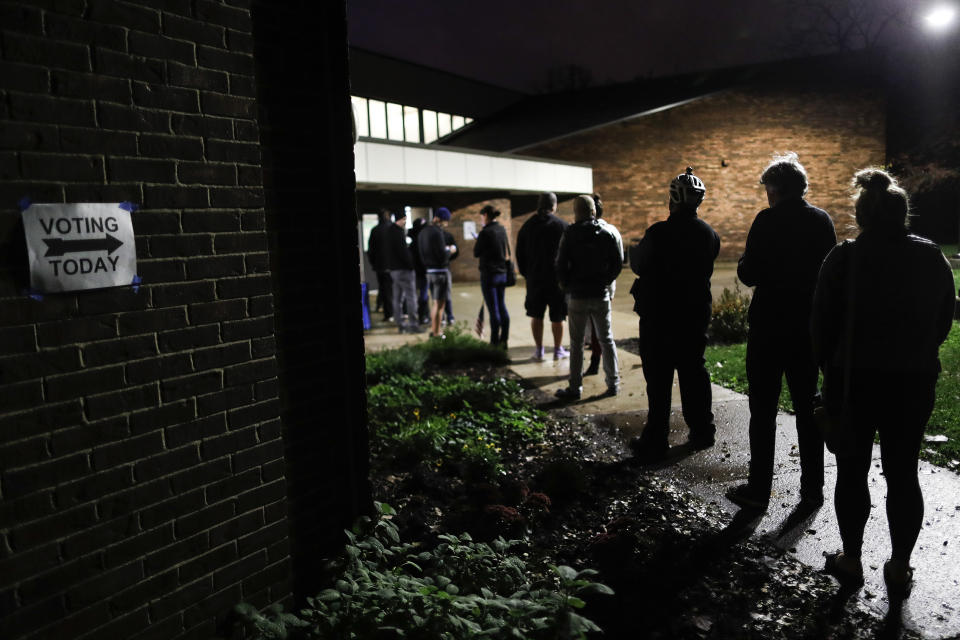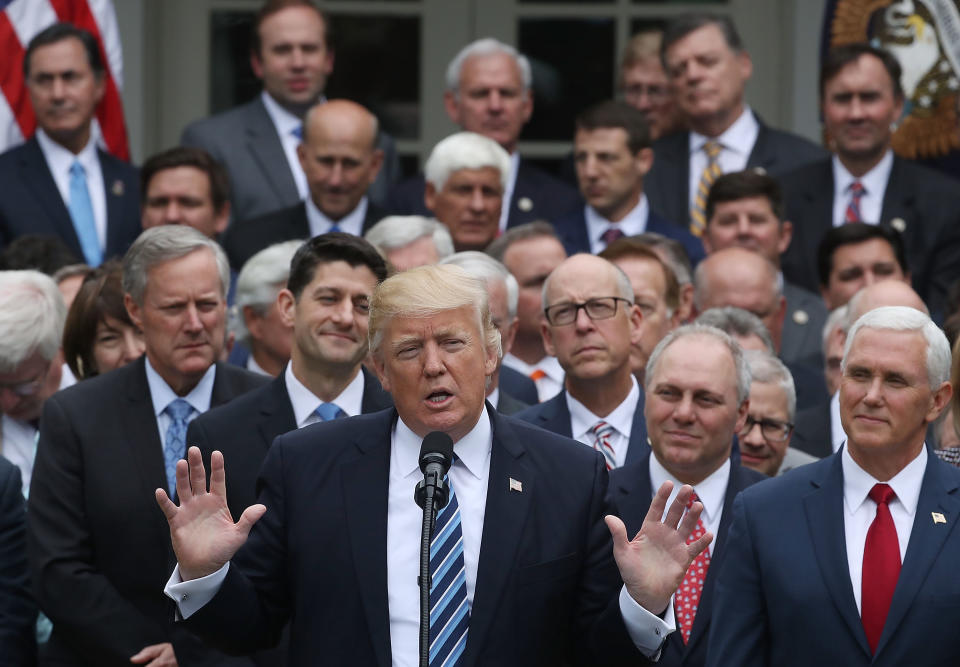Tight races across the US as more polls close in midterm battle for Congress
Polls closed in more than half of the 50 US states on Tuesday after a divisive midterm election campaign that will shape the future of Donald Trump’s presidency, and most of the key races that will decide control of the US Congress were still too close to call.
Democrats struck first in the battle for the US House of Representatives, ousting incumbent Republican Barbara Comstock in a suburban Virginia district outside Washington to pick up the first of the 23 seats they need to gain a House majority, according to data provider DDHQ and US media outlets.
Democratic senators Bernie Sanders of Vermont, a 2016 presidential contender, and Tim Kaine of Virginia, Hillary Clinton’s vice presidential nominee in 2016, easily won re-election, news networks projected. Democratic Senator Sherrod Brown was projected to hold his seat in Ohio.
Republican Mike Braun opened an early lead in the crucial Senate showdown in Indiana with incumbent Democrat Joe Donnelly, but the race was too close to call with just 20 percent of the votes in.

Tightly contested Senate races in Florida and West Virginia also were too close to call, as were high-profile races for governor in Ohio and Georgia.
Democrats looking to seize control of Congress have pinned their hopes on women and minority voters, while Republicans have hoped to retain majorities by preserving support among the bloc of voters who propelled Trump to the White House in 2016.
US midterm voting results too close to call
A full picture of the midterm voting results will not emerge for hours, with many of the most important races considered toss-ups heading into Election Day.
The first national elections since Trump captured the White House in a 2016 upset became a referendum on the polarising president, and a test of whether Democrats can turn the energy of the liberal anti-Trump resistance into victories at the ballot box.

The Democrats are favoured by election forecasters to pick up the 23 seats they need to gain a majority in the House, but opinion polls show they have slimmer hopes of picking up the two seats they need to gain control of the Senate. All 435 seats in the House, 35 seats in the 100-member Senate and 36 of the 50 state governorships were up for grabs.
Democrats bank on anti-Trump sentiment
The volatile midterm campaign was marked by clashes over race, immigration and trade. In the final stretch, Trump hardened his rhetoric on issues that appealed to his conservative core supporters, issuing warnings about a caravan of Latin American migrants headed to the border with Mexico and condemnations of what he called US liberal “mobs.”
Many Democrats, already benefiting from anti-Trump enthusiasm, focused on bread-and-butter issues like maintaining health insurance protections for people with pre-existing medical conditions and safeguarding the Social Security retirement and Medicare healthcare programs for senior citizens.

If Democrats capture the House, they could block Trump’s policy agenda and launch congressional investigations into Trump’s administration, including his tax returns, possible business conflicts of interest and the nature of his 2016 campaign’s ties to Russia.
A Republican victory in both chambers of Congress would be a validation for Trump’s polarizing style, a month after he solidified a conservative majority on the Supreme Court when the Senate confirmed his nominee Brett Kavanaugh after a fight over sexual misconduct accusations against the jurist.
Striking a dark tone at a rally in Indiana on Monday evening, Trump accused Democrats without offering any evidence of “openly encouraging millions of illegal aliens to break our laws, violate our borders and overrun our country.”
Voters turn out to protest against president

President Donald Trump was a dominant force in the 2018 midterm elections as attitudes toward the polarising leader influenced the decisions of more than 6 in 10 voters.
Nearly 40 percent of voters cast their ballots to express opposition to the president, according to AP VoteCast, a national survey of the electorate, while about 25 percent said they voted to express support for Trump.
While Trump is not on the ballot, his controversial presidency has animated voters on both sides of the aisle, with 2018 likely to set turnout records for a midterm election. Democrats have been activated in opposition to Trump since the moment of his election, while in recent weeks Trump has driven Republicans to the polls by trying to cast the race a referendum on his administration.
The snapshot of who voted and why comes from preliminary results of VoteCast, a nationwide survey of more than 113,000 voters and about 20,000 nonvoters conducted for The Associated Press by NORC at the University of Chicago.
According to VoteCast, women voted considerably more in favour of their congressional Democratic candidate: About 6 in 10 voted for the Democrat, compared with 4 in 10 for the Republican. Men, by contrast, were more divided in their vote.


